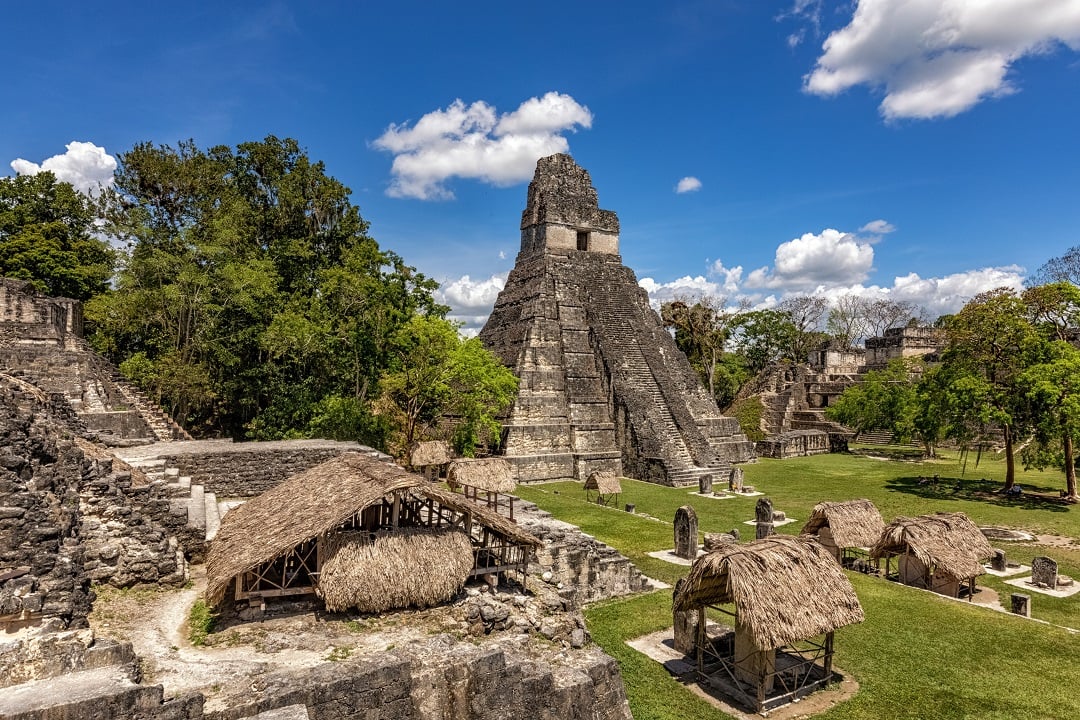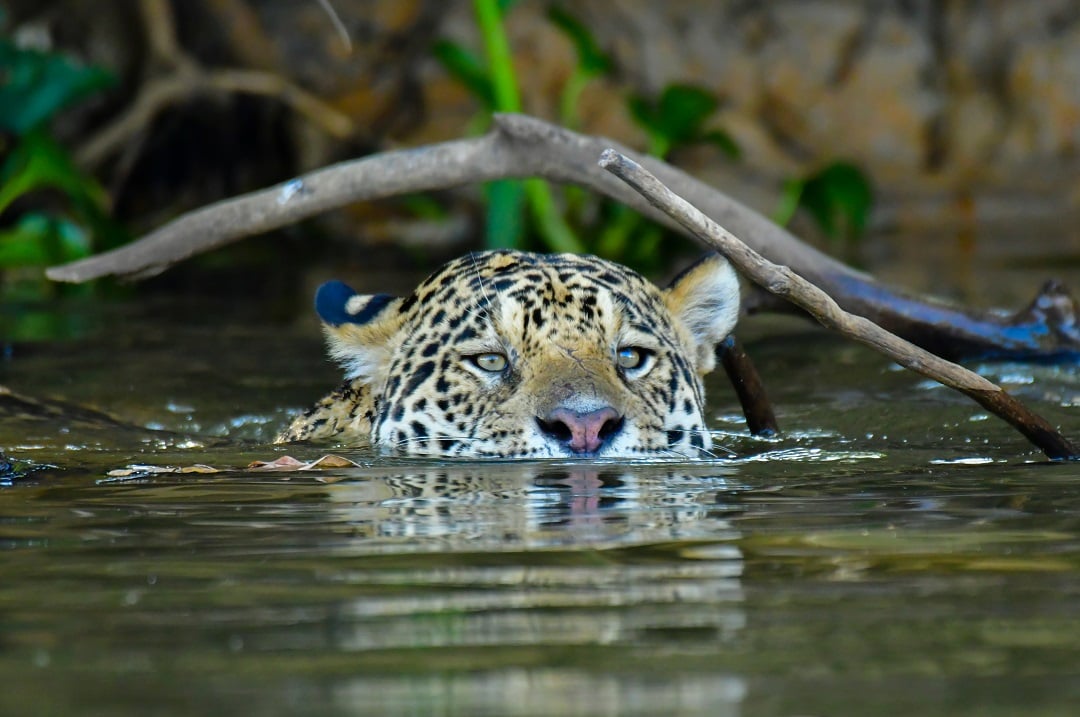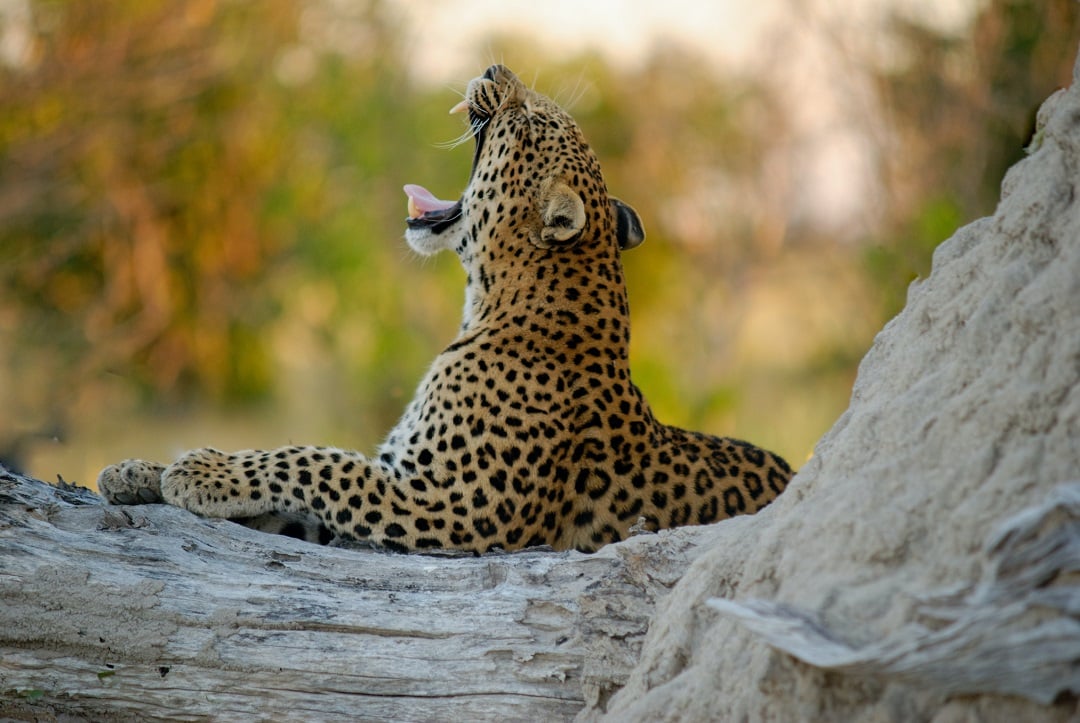
16 fascinating jaguar facts
Blog
Big cats are some of the most captivating wild animals. Elusive, powerful, and graceful. Lions and tigers are easily identifiable and greatly loved, but there’s far more to the world of big cats than these icons.
1. Jaguars are the third largest cats in the world
Jaguars are “big” cats packed into a smaller form factor. They’re the largest cat in the Americas and are the third largest cat in the world, behind tigers and lions. Males weigh up to 120kg, while the smaller females reach a maximum of 100kg. To put this in context, jaguars are about half the weight of a lion, but more than double that of a cheetah.
However, jaguars are no taller than a meter, making them powerful but relatively compact compared to lions and tigers.
2. Jaguars were revered by Mesoamerican civilizations
In Mesoamerican indigenous communities, jaguars were one of the most revered animals. Every major Mesoamerican civilization had a jaguar god, many of which were important parts of their religion. These communities viewed jaguars as symbols of strength and power.
For example, the Aztecs named their most elite warriors “cuāuhocēlōtl”, a combination of the Aztec words for eagle and jaguar. They wore costumes that made them resemble these majestic cats and led their communities both on the battlefield and at home. In Aztec culture, many believed that shamans could transform into jaguars at will and would become jaguars after they died.

Temple of the Great Jaguar, located in Guatemala, is located in one of the largest cities and archaeological sites of the pre-Columbian Maya civilization. (Photo: Ingo Bartussek/Shutterstock)
3. Jaguar spots are unique
Learning to tell jaguars apart from other big cats is easy. They have beautiful tan and orange fur* covered with black spots known as rosettes. These rosettes are different from the spots on any other cat. Each rosette is a jagged circle that makes up an outer ring with a single black spot in the middle. Other spotted cats have the ring that characterizes the rosettes, but none have the central spot of the jaguar.
(*While most jaguars are tan and orange... a rare black variant appears in the jaguar species! It’s estimated only 11 per cent of jaguars have this dark colouration.)
4. Jaguars love swimming
Unlike most cats you’ve heard of, jaguars are excellent swimmers and love the water. They can fully submerge and dive in pursuit of prey if needed and won’t hesitate to attack prey animals in the water.
 Photo: Walter Mario Stein/Shutterstock
Photo: Walter Mario Stein/Shutterstock
5. Jaguars look after their cubs
Jaguars don’t have big litters. They typically have two cubs at one time (though they can have up to four). The cubs are born completely helpless and blind. They remain with their mother for two years as they grow and learn to hunt and take care of themselves.
Jaguars are sentient beings, meaning they think and feel and have personalities and needs of their own. The breakthrough research and studies of animals' feelings and emotions show how the life of a wild animal, like a jaguar, is mentally and physically better in the wild with its cubs.
6. Jaguars are exploited for commercial purposes
Jaguars aren’t some of the most endangered animals in the world, but that doesn’t mean that the species is thriving. With only around 173,000 jaguars left in the wild, they’re considered “near threatened”. Regardless of their status, jaguars should not be exploited for any commercial purposes. They are wildlife and deserve a life in the wild.
7. Jaguars live primarily in the rainforest
As opportunistic ambush predators, jaguars aren’t well-suited to large open spaces. Instead, they’re typically found in rainforests and wetlands. Approximately half of the world’s population of jaguars live in Brazil. The rest can be found in Mexico and Central and South America, including northern Argentina.
 Photo: Colin Watts / imagefactory.co
Photo: Colin Watts / imagefactory.co
8. Jaguars are fast
Cheetahs are the first to come to mind when you think of fast runners in the animal kingdom. Jaguars can’t quite reach the 70 miles per hour (113 kilometers per hour) of the cheetah, but they reach a very respectable 50mph (80km/h)
This makes them the second-fastest big cats in the world. They also have an impressive ability to jump and climb when necessary.
9. Jaguars aren’t fussy eaters
Jaguars are carnivores, like all other cats. On land, they will commonly hunt deer, capybaras, and tapirs. And they’re just as comfortable in the water, seeking out fish, turtles, and caiman to meet their appetite.
As opportunistic hunters, however, they will prey on almost any animal they come across.
These techniques and their incredible bite power allows them to dispatch prey as large as cows.
10. Jaguars are crepuscular
Most of us think of animals as being either diurnal or nocturnal, but jaguars don’t fit into this pattern. They can be active either during the day or at night.
In fact, jaguars are considered crepuscular and nocturnal, meaning they’re most active during dusk and dawn. These are the times when they’re most likely to be hunting. That said, it’s also common to find them hunting during the day.
11. Jaguars travel long distances
Jaguars can regularly travel over six miles per day in search of food. They’re solitary animals, marking their territory and only getting together with others to mate.
Where space allows, jaguars can have territories of up to 54 square miles.
12. Jaguars are struggling with the loss of their habitats
Jaguars are being threatened because their habitats are being lost to deforestation and other human activities. Much of this land has been appropriated for agricultural activities such as cattle ranching and crops used to produce animal feed.
Any reduction in habitat makes it harder for these solitary cats to maintain sufficient territory to feed themselves. It also increases the risk of conflict between individual animals.
13. Jaguar prey have also reduced in number
The loss of habitat has also impacted the animals that jaguars rely on for food. When prey becomes scarce, jaguars start looking for alternative food sources, including agricultural livestock.
The people living in areas frequented by jaguars attempt to protect their animals, which unfortunately often leads to killing the big cats threatening their livelihood.
14. Jaguars are facing increased risk from fire
Jaguar territories are increasingly at risk from fire, threatening both jaguars and the prey animals they rely on, further exacerbating the problems they already face.
Factory farming methods are becoming increasingly common throughout the Amazon, with catastrophic consequences. Fires are often deliberately set to clear large swathes of land quickly.
Once rainforests have been removed, they are replaced with monoculture crops, which are more vulnerable to wildfires than the original ecosystems.
15. Jaguars are popular targets for poaching
Despite their impressive camouflage, speed, and agility, jaguars are popular with poachers. Their beautiful fur means that they command high prices for their pelts and skins, and their sharp teeth and claws are seen as valuable trophies.
Beyond poaching for trophies, jaguars are often captured and sold as exotic pets, to private wildlife collectors, or as tourist attractions.
 Jaguar teeth in a jewellery shop. | Photo: Anonymous source
Jaguar teeth in a jewellery shop. | Photo: Anonymous source
16. Jaguars are used in traditional Asian medicine
Jaguars are also often killed for use in traditional Asian medicine. They are typically boiled whole until they reduce down into a paste used for various purposes, from treating arthritis to improving sexual performance.
None of these animal-derived products are scientifically validated or effective.
Protect jaguars and other wildlife from the illegal wildlife trade
Every day, thousands of wild animals are poached, farmed, or sold into the global multi-billion-dollar wildlife trade – for food, pets, traditional medicine, and entertainment. If you’d like to protect jaguars and other species then please consider a gift today to our critical investigative work, research and campaigning, which together can help strengthen laws and enforcement, so we don’t lose keystone species. Once they are gone, they are gone forever.
Banner image: Giedriius/Shutterstock